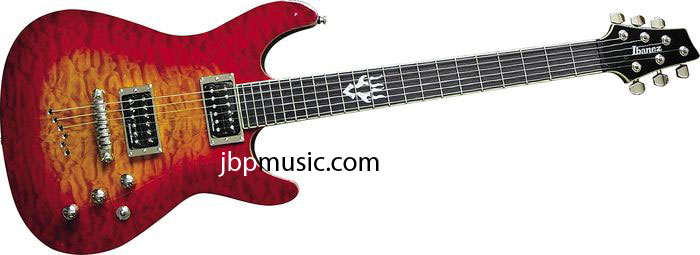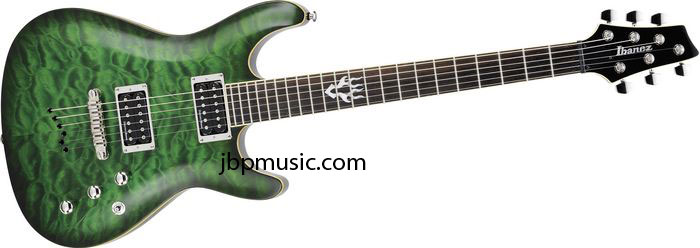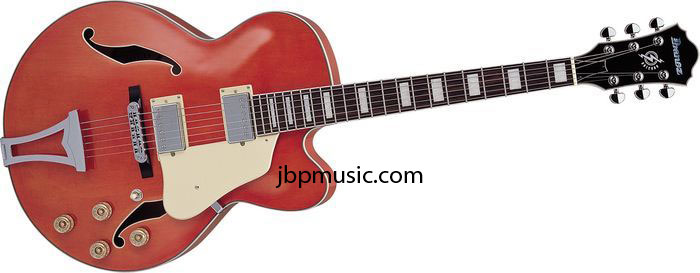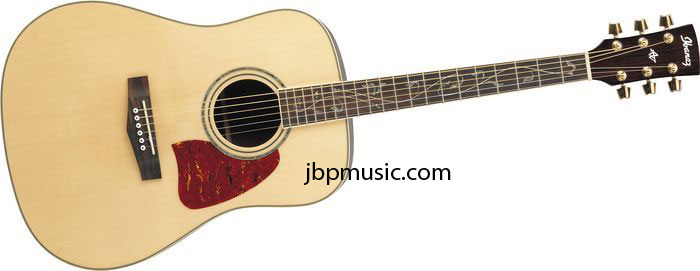Ibanez SZ520QM SZ520 Electric Guitar Review
Ibanez SZ520QM Electric Guitar Review
When I was first looking for an electric guitar that I could use as a recording guitar and as a way for my son to cut his guitar-chops, I searched high and wide. I had a severely limited budget at the time I began playing again… and had to get some of the features I knew that I liked in a guitar from my early days.
I wanted a guitar that was tough enough to handle hard rock guitar but that didn't fold on me over time. I also wanted an instrument with lots of sustain, plenty of output, and a nice neck.
I ended up settling on an Ibanez SZ520 for a number of reasons. For sure, though, the SZ520 is a remarkable instrument – one that is not given its true kudos in the world of guitars. It is an unsung hero and an excellent instrument.
Quick Opinion: The Ibanez SZ line of electric guitars (and, to an extent, the Ibanez S line of guitars) are excellent instruments. They have the quick feel of a rocker’s guitar, fairly good quality, and excellent features.
These guitars have excellent playability, great sound, and a price that puts them at the mid range between less-expensive set-necks, and inexpensive top-brands. SZs are not a bargain – rather, they are at the top of their range. Whether or not to purchase an SZ will depend very highly on your personal feature interests, and your particular desire for a given sound. Let’s take a look at this fine instrument – with some comparisons along the way.
The SZ is no longer produced as a new product by Ibanez, but you can see more about Free Shipping on Ibanez electrics at GuitarCenter.com
 Ibanez SZ520QM Electric Guitar Review
Playability:
Ibanez SZ520QM Electric Guitar Review
Playability: Several things strike you immediately when you first pick up and play the SZ520. The neck is a dream – and lacks a big heel. The staggered, string-through design rings with sustain. The body is very nicely balanced and is of medium weight. The fretboard is comfortable.
The neck on the SZ520 is nearly ideal for chord players, shredders, and slide playing. It strikes a nice, medium-width balance against just a deep-enough “C” shape to get a grip on it when you’re running up and down the neck. The neck back is painted to match the body, and has a nice, hard, smooth finish. The neck-to-body join is superb on this instrument – few electrics get anywhere close to this nice of a join. The heel-less feels fantastic when you’re flitting around above the 14th fret. I truly wish most Gibsons and Epis had this type of neck join on their electric guitars.
The body balance is above average, if not pretty close to excellent. After playing the SZ for several hours, you don’t feel like you’re struggling with an unruly animal. It just feels good where it is – especially since the weight is medium in the spectrum. A Fender Stratocaster is significantly lighter in
feel, and a Les Paul is a bit heavier in
feel.
The fretboard, string-spacing, and fret size are an interesting combination – almost unique when compared to the other manufacturer’s view on fretboards. The fretboard is subtly different from most any other instrument out there. For those who are familiar with Fenders: it is thinner than a Strat and wider than a Tele – very similar to the superb and underrated Fender TC-90. For you Gibson and Epi fans out there, the SZ is much more like an Epiphone SG with respect to its neck. The fretboard is extremely similar to the Epi G400s I’ve played.
Fingerstyle players or players who use a modified pick hand (like myself) will find the strings a bit close together. However, this is balanced out by overall comfort, and the ease of gripping chords.
In order to get great sounds out of the SZ in slide and chord/soloing, the strings had to be at least 10s with thicker middle strings (and better, 11s or 12s). Custom light and extra-light strings sound muddy and don’t tune well when applied to the SZ. Also, the tone and sustain are robbed with smaller-gauge strings. I tried 10s Fenders, several 10s GHSs, and even the venerable D’Addario XL110s on the SZ, and none of them sounded very good. I ended up settling between D’Addario XLs with a minimum 11 high E-string and Ernie Ball Power Slinky (11.14.18.28.38.48). The Ernie Ball Power Slinky strings sounded the best by far.
If you’re not going to slide on the SZ, you’ll still need to get some good calluses and stay with a set that is 11 and above. 12s were just too thick for me on this instrument – I had a hard time getting a good vibrato and smooth-transition string-bends with 12s.
The fretwork of the SZ I owned was superb in almost any respect. The frets are medium in overall size and height, and the ends were reasonably well-dressed. The nut was well-worked and had no issues at all.
Features: The Ibanez SZ520QM (QM stands for “quilted maple” cap) is a high-feature guitar made in Korea. It has a gorgeous quilted maple cap on a warm and medium-thick mahogany body. The tuners are OK (not great), but the neck inlay is beautiful (my guitar got the name “blue flame” because of its 12th fret inlay). The finish on the guitar is deep and lustrous.
The heel-less neck feature is worth mentioning again. Feel it for yourself – most folks will absolutely love it.
The binding is light-cream, and is superbly done. I only felt the “edge” of the binding in one or two places on the front of the body, and none on the neck.
The Duncan/Ibanez open-face humbuckers are a nice feature. They strike a nice balance between being able to play stronger, more assertive music – and music that is marginally mellower.
The string-end design is string through. The staggered string holes are of varied lengths from the bridge and its saddles. Unlike many string-throughs, there is no tailpiece – the strings feed directly from the bridge to the holes in the body.
The Gibralter III bridge makes intonation a fairly easy task, and is completely buzz-free. It is stud-mounted to the top of the guitar, so lots of sound emanates through the bridge very nicely into the guitar body.
 Sound:
Sound: The SZ520QM sounds wonderful. It has tons of sustain (although an Epi or Gibson Les Paul still have a longer and warmer sustain – the SZ is more like a set-neck SG in sound and sustain). The pickups and electronics are clean and noise-free. Sonically, the SZ is a good crossover guitar – from harder music to classic rock.
I found the pickups to be not as high on the output scale (sound-wise – I didn’t pull them and put them on a multi-meter) as you get with EMGs or more aggressive Seymour Duncan humbuckers. They are louder than my first Epiphone Les Paul’s original open-face humbuckers, but they are not as rich and creamy.
The pickup-selection-and-tone part of the guitar is pretty good. The SZ has the often-used Tone-Volume-Volume plus pickup switch hardware setup. With the SZ520QM, there is one master tone knob, the middle knob controls the bridge pickup volume, and the knob closest to the neck controls the volume of the neck pickup. The SZ also uses a fairly standard (but extremely well-made) pickup selector toggle switch.
Value: Value for the money is where the SZ is not quite a clear winner. I don’t think the guitar is terribly over-priced, but it is not a bargain in any sense. The Fender TC-90 (albeit with Black Dove P90 pickups) and the Epiphone Explorer and Epiphone Flying V are much better performers – yet they all cost less. A similarly-equipped Dean, Jackson, or Schecter is generally a better bargain for sound and price.
With that said, and in all fairness, the SZ520 does have a great feel, and does a decent enough job for the sound. I am a fan of Ibanez guitars, and there are many models that are great… I just think the SZ 520 should be a little lower in price. – or should have higher-end Seymour Duncans to bring up the value.
Wishes: Some nickel-covered and upgraded Seymour Duncans would be great (or, even better, some EMG HZ passive pickups, perhaps H4s). I really think Ibanez should choose to use some nice Grovers as tuners, or at least some locking tuner/locking nut offerings on this guitar.
Labels: acoustic guitar, bear, electric guitar, ibanez, review, set neck, shredder, sz, sz520, sz520QM
Ibanez AF-75D/AF75 Review - long-term impression

When I started playing guitar again (about a year and a half ago - after a 25-year break), one of my goals was to have different sounds with different types of guitars. One distinct sound for which I was looking was the jazzy/bluesy/open-body sound. In addition, I wanted the guitar to be able to rock 'n' roll.
A Second-Look: Ibanez AF75/AF75D long-term review
I visited my local guitar haunts and played just about every type and example of hollow- and semi-hollow-body electrics. My budget was $300 or less. To name a few, I played all of the Ibanez Artcore AF variants, several examples of the Epiphone Dot Studio, a few of the Carlo-Robelli/Brownsville types, and even a few used Gretschs and Gibsons (out of my budget range). I settled on a snappy and beautiful example of the Ibanez AF75D. Bear in mind that I played many examples of the same kind to get a feel for quality consistency and sound consistency. The one with which I came home was $319, and was a stunning example. I think I'd still like to have an Epiphone Dot Studio someday, but it was too far above my budget, and (frankly) I couldn't find an example with both a straight neck
and one with good electronics.
Quick Opinion: The Ibanez Artcore series are generally very well made. Most are made in China. The AF75D example I purchased ("Punkin") was exceptionally well made. The price was reasonable, and the sound quality is very much nicer than anything else in its price range. The guitar is chock full of features, has great parts, and plays like a dream.
I LOVE my AF75. Given the money in hand, I would buy another to put away for when I wear this one out.
See more info about the Ibanez AF75 here at GuitarCenter.com Playability:
Playability: The neck feels pretty quick and seems to be in the ballpark of Epis/Gibsons (short "feel" to the scale). The taper is just right, the fretboard was extremely nicely dressed and fitted, and the overall weight of the guitar is nicely light. After I fitted some Fender flatwound electric guitar strings (and substituted a plain 3rd instead of wrapped), the guitar played like a dream. The action adjusted to just the right height with little effort, and the reach of the single cutaway is very good - the top few frets of the low strings are a bit of a stretch.
Features The AF75 has two closed-cover humbuckers, binding on the neck, body, f-holes, and headstock. The tuners are very much like well-made grovers - very smooth and accurate. The trapeze and floating bridge combination makes for a wonderful and open sound (be careful, you must be prepared to do some measuring and intonation once you buy it - the position of the bridge is important to intonation). The three-way toggle is problem-free, and is fairly easy to reach. The individual volume and control knobs work fairly well in their purpose (they remind me of old Gibson Les Paul speed knobs). The body is laminated, but nicely shaped maple. The fit and finish overall is nearly as perfect as one could expect from a nicely-made guitar. The finish of the coloring is flawless - I really enjoy the "differentness" of the orange. The frets are medium, and are extremely well finished (I've played many $700+ guitars that don't have frets as nice as these).
Sound: The sound is open, airy, and wonderful. In any genre in which I play, this guitar can fit in. It is best for music from the 50s, 60s, and 70s - or Jazz or relaxed blues. It can play rock with the best of them, but the pickup output is too weak for hard rock/metal/thrash. In a loud band stage situation, the guitar can cause some feedback if placed too close to an amplifier (amazingly, this only happens in a few different melodic keys). The overall sound is crisp, clear, and refined. I'd rate the sound as something that is not as edgy as a Strat, but much mellower than a Les Paul or PRS.
Value: This is a $499 guitar in value (not 'retail',
'street'). The sound, quality of make, and appointments are top-notch for a bargain hollow/semi-hollow electric guitar, excellent. To get a better instrument, youíd have to go to a Gibson or a top-end Epiphone (Casino, etc.). This guitar is made in China, but you would have difficulty telling its origin from the excellent build quality. My local guitar stores now have them at $349 on the sticker. A case would be a good thing to get to protect your guitar - many different manufacturers make a case that works well with this guitar.
Wishes: Good instructions on bridge placement (for those who don't know how to adjust and place their bridge) would be essential. Stronger output from the humbuckers would be good, and a larger center-block to help keep feedback down would be good.
Labels: af-75, af-75d, af75d, electric guitar, hollowbody, ibanez
Ibanez ArtWood AW 40 Acoustic Guitar Review

Update, October 2009 Sigh... the AW40 is no longer in production. I've since found a used one that had been dropped and have rehabilitated it into my mountain-trips guitar. Lovely, wonderful, plays well, sounds awesome, even after it was dropped (hard) by its previous owner.
I had been looking for an affordable solid-spruce-top 6-string acoustic for nearly a year. I was looking for medium-bright sound that also had crisp, clean basses, but with good resonance, easy playability, and good intonation. Finding a guitar that meets these expectations, and is under $400, is a real challenge.
I started my quest by playing countless acoustics at both my local guitar stores. I probably played more than 200 different low-cost acoustics – specifically looking for my target attributes.
I eventually discovered the Ibanez AW 40. This delightful acoustic guitar is from Ibanez's ™ ArtWood™ series acoustics. The street price for the AW 40, both locally and on the street was $200US. This new AW 40 turned out to be the guitar I purchased – and I’m very glad I did. I bought the AW 40 (mine is named “Rosie”) from my Sam Ash guy and have played it quite a bit – it has been used on many songs across three different acoustic albums of mine.
Quick Opinion: I chose to play the AW 40 on and off for a few weeks before I actually purchased it. I wanted to play several other contenders in comparison just to be sure:
The AW 40 is a bargain, and is an excellent purchase! It has excellent craftsmanship, good features, and sounds like guitars that cost $200-$300 more. Purchasers of the AW 40 are VERY unlikely to be disappointed! This is the second-most-played-acoustic I own.
Free Shipping and more information about Ibanez Artwood acoustics here at GuitarCenter.com Playability:
Playability: The neck is a delightful satin-finish soft “c”-ish shape (the rosewood color is unique, too). This guitar plays nicer than the gloss-finish necks of many other guitars in this price range.
The frets are finished nicely, and are just the right balance of height and thickness. The scale is just right – medium. There are no buzzy frets on the example I purchased. The string height was a little too low when I brought it home, so I had to change the truss rod just a tad to stop general string buzz. Once I raised the strings a bit, the string sound was flawless.
The weight and depth of the AW 40 body is excellent, and the fretboard feels smooth and quick. The 1 5/8” width nut is just about right for this particular neck.
The AW 40 ships with
D’Addario EXP bronze strings (opens new window), starting with .11 width on the 1st string. These particular strings are really quite nice (especially if you like coated strings), and are appropriate if you like a little darker high sound. After a week or so with the stock strings, I switched to D’Addario EXP phosphor-bronze .11s to give me the crisper bass sounds I was seeking. Once the new strings were installed, this guitar has been giving the low-end
Martin™ guitars (opens new window) a strong run for the money.
Sound: Crisp, crisp, crisp, resonant, and more crisp! The solid spruce top lives up to its job very well. The bass sounds are clean and clear. The 1st and 2nd strings above the 13th fret are a little thin for my tastes. The midranges are clean and rarely muddy for finger-picked notes. The body resonates nicely against your chest and hands when the guitar is played. Very nice!
Value: This is a $450 guitar in value (not 'retail',
'street'). The sound, quality of make, and appointments are top-notch, excellent. To get a better instrument, you’d have to spend at least $499. This guitar is made in China, but you would have difficulty telling its origin from the excellent build quality.
Features: This is an excellently-designed instrument. It has the bits needed for daily use and for recording alike. The body is fully bound in a nice white-with-black stripes motif. The rosette is a beautiful abalone-ringed decoration. The headstock has inlaid pearl Ibanez logo and AW logo. The back of the guitar has a nice black-white center stripe and nicely matched halves. The red-ish shell pickguard does seem a bit bright for the cream-colored spruce top, but is pleasant enough.

An unexpected and
BEAUTIFUL feature of the AW 40 is the
abalone "vine of life" fretboard inlay. This is truly a nice-looking addition, and is really nice and unique. I always get good comments on this feature every time folks see Rosie.
The stock tuners are mechanically sound, but felt a bit uncomfortable. In addition, the gold plating on the tuners was not well done at all. It looked as though the gold had barely been applied (this was true on all the examples I played).
More about the tuners: I ended up replacing the stock machine heads/tuners with Grover™ Rotomatic™-style 14:1 tuners. The screw holes did not match the factory screw placements exactly, but I felt it was worth it to drill new screw holes and putty the old ones – and gain excellent tuners. I bought chrome Grovers, and they look very nice with the rest of the guitar’s appointments. The Grovers function flawlessly and are, well, they're Grovers ('nuff said!).
Wishes: The tuners really should have been better-made and better executed. Even the Yamaha™ basic guitar tuners work better and look better than those on the AW line.
Labels: acoustic guitar, art wood, artwood, aw 40, aw40, guitar, ibanez, instrument





